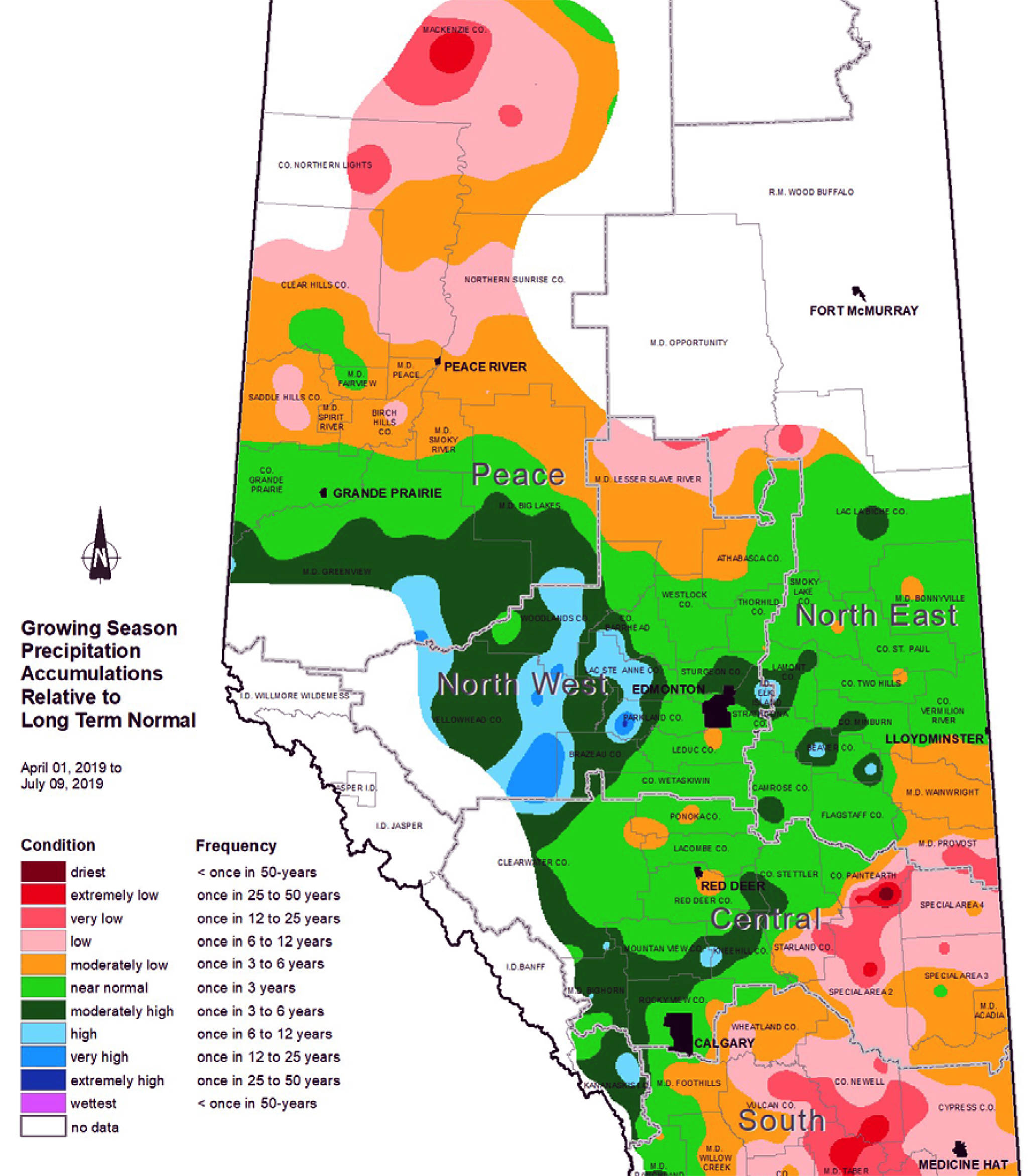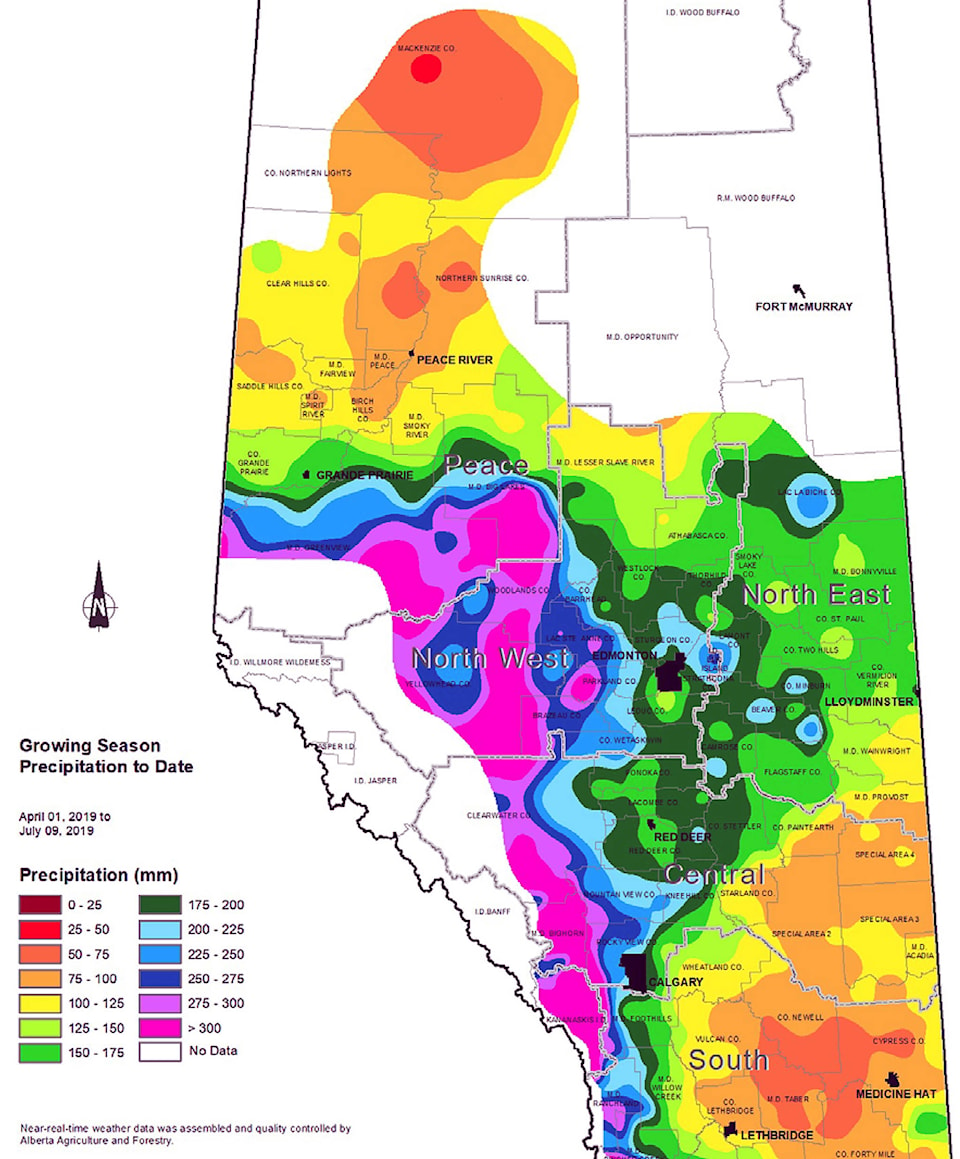The large amount of rain central Alberta has received is challenging hay crops.
“What the huge concern now is for hay,” says Harry Brook, crop information specialist with Alberta Agriculture and Forestry.
“With so much rain, the hay has grown a lot and quickly. However, there hasn’t been much cut, as the ground has never dried enough to get at it.
“If this unsettled weather keeps up, and the hay gets too mature, it will make for poor quality.”
Another concern, especially for dairy producers across the region, is that corn crop growth is far behind normal, he said.
“The corn crops out there now are in terrible shape,” Brook said.
“I’ve looked at the heat unit values at various weather stations across the province, and it’s not good. Corn performs best in temperatures at 25 degrees and above. If this weather pattern continues, there will be some really poor yields around the province.”
With the large amount of moisture this year, Brook noted that producers are going to have to be on the watch for disease, such as fusarium head blight.
“With this amount of moisture and tight crop rotations, producers should expect the potential for disease formation,” he said.
Brook anticipates many farmers will simply go ahead and spray fungicide, but he issued some words of caution.
“Go out and check first for symptoms of disease in your crops, rather than running the risk of wasting money on spraying that isn’t necessary,” he advised.
“If we use it just because, and there begins to be development of resistance, then we wind up losing another tool to fight disease.”

